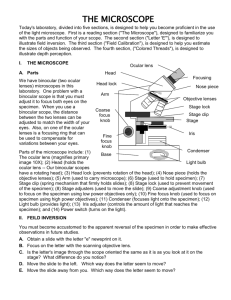Page 1 Questions
advertisement
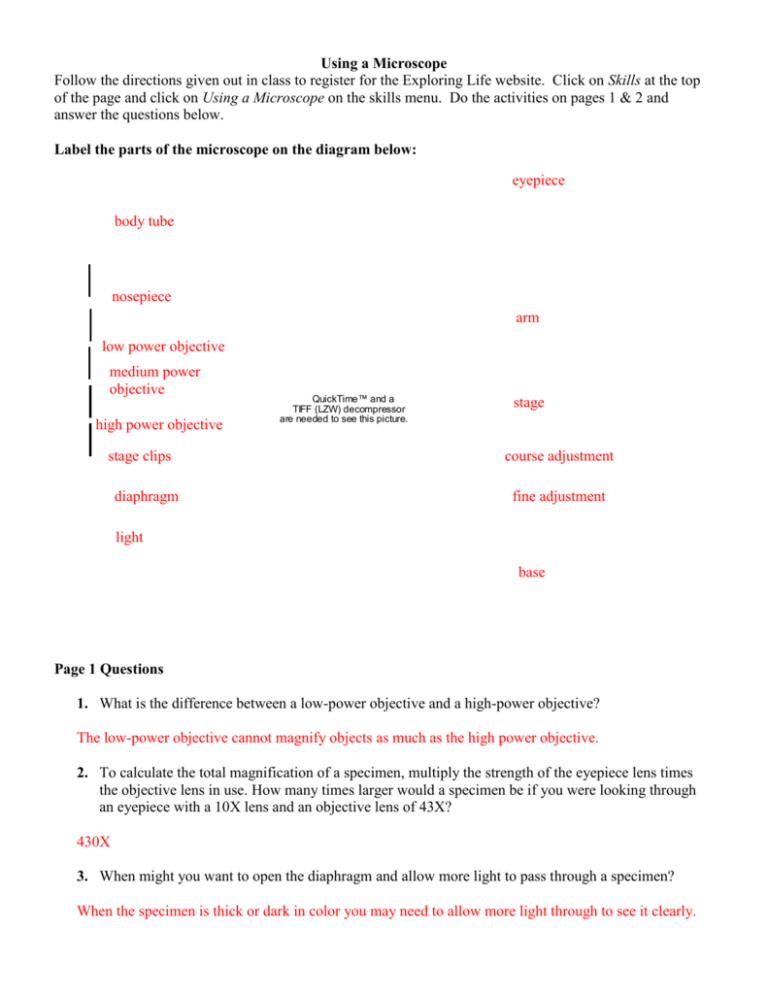
Using a Microscope Follow the directions given out in class to register for the Exploring Life website. Click on Skills at the top of the page and click on Using a Microscope on the skills menu. Do the activities on pages 1 & 2 and answer the questions below. Label the parts of the microscope on the diagram below: eyepiece body tube nosepiece arm low power objective medium power objective high power objective stage clips diaphragm QuickTime™ and a TIFF (LZW) decompressor are needed to see this picture. stage course adjustment fine adjustment light base Page 1 Questions 1. What is the difference between a low-power objective and a high-power objective? The low-power objective cannot magnify objects as much as the high power objective. 2. To calculate the total magnification of a specimen, multiply the strength of the eyepiece lens times the objective lens in use. How many times larger would a specimen be if you were looking through an eyepiece with a 10X lens and an objective lens of 43X? 430X 3. When might you want to open the diaphragm and allow more light to pass through a specimen? When the specimen is thick or dark in color you may need to allow more light through to see it clearly. Page 2 Questions 1. When do you use the coarse focus adjustment knob on a microscope? Use the course adjustment only while focusing on low power. 2. Suppose you are looking at protists under the microscope and cannot see anything on low power. What adjustment could you make to the microscope that might help you see the protists, without switching to a higher magnification? Use the diaphragm to reduce the amount of light. 3. Suppose you focused on an organism using medium power, but then cannot see the organism after switching to high power. What should you do? Switch back to medium power and find the organism again. Make sure it is centered in the field of view and in sharp focus. Then switch back to high power. You may also need to adjust the light using the diaphragm. 4. When putting together a wet-mount slide, why is it important to make sure that there are no air bubbles under the cover slip? What should you do if there are air bubbles? Air bubbles interfere with your view of the organisms. You can tap the top of the cover slip gently with the eraser end of a pencil to remove the air bubbles.


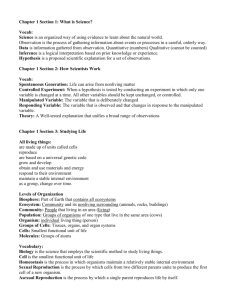
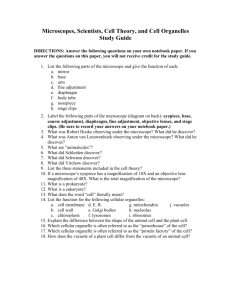


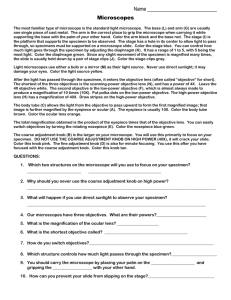
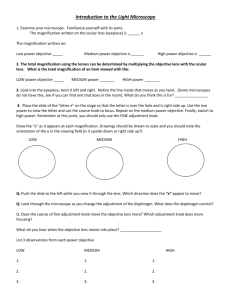
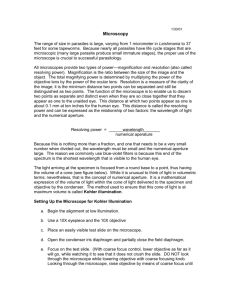
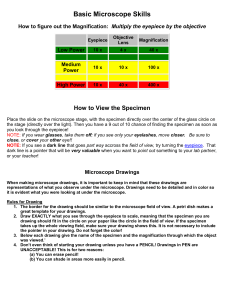

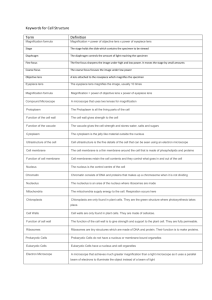
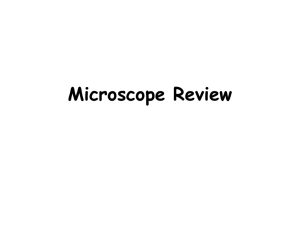
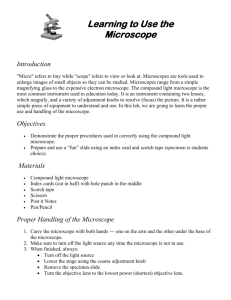
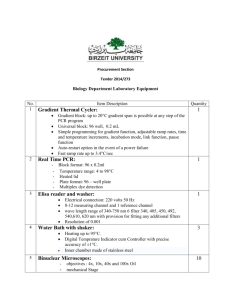
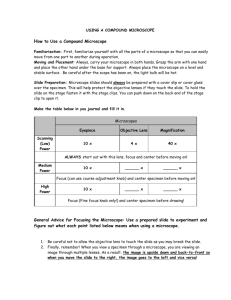
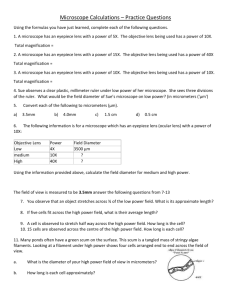
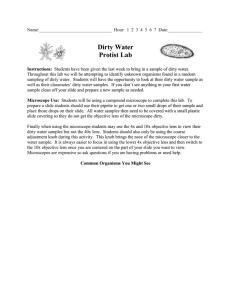
![Compound Microscope [PROJECT]](http://s3.studylib.net/store/data/007036858_1-b0b68b6cfb7c591af3739fc5694f8d8c-300x300.png)

